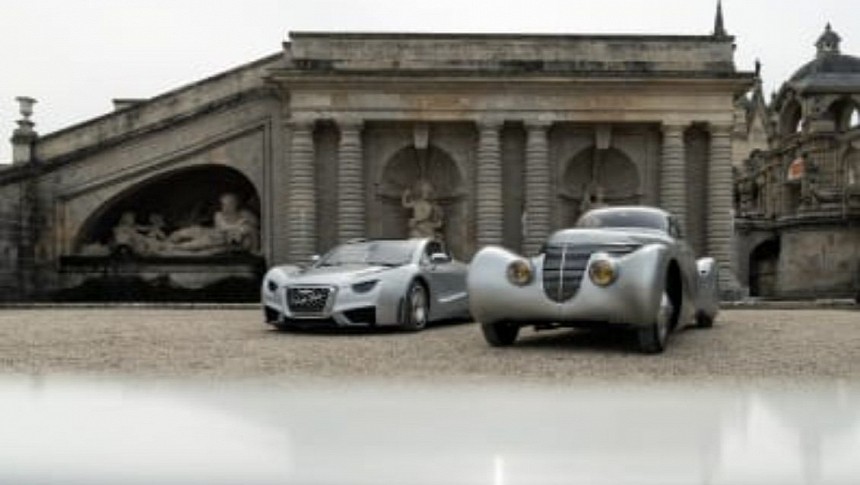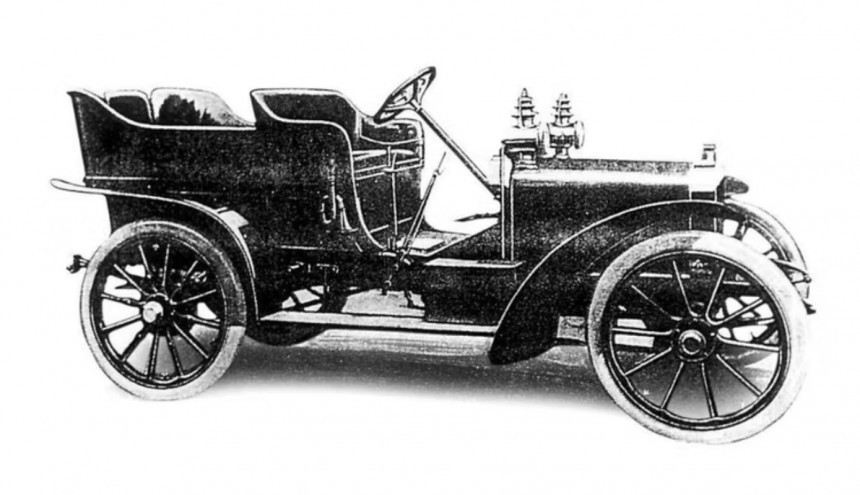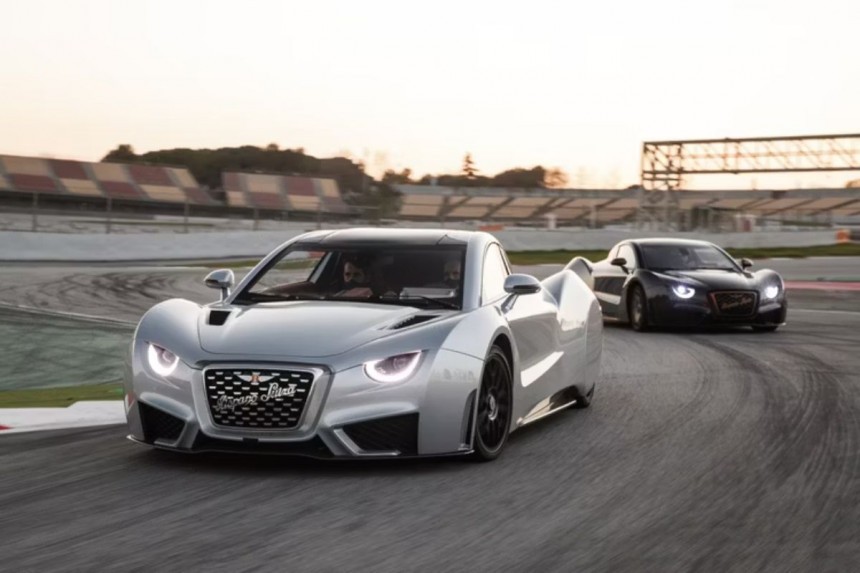Get ready to say "hola" to the electrifying comeback of Hispano Suiza! The legendary automaker is reving up with its limited edition 1,000-hp supercar, the Carmen. Sure, Spain isn't exactly known for its car industry, unless you count Seat - but let's be real, those are just souped-up Volkswagens, like the Czech Republic's Škoda. And before they merged with VW, Seats were basically Fiats in Spanish clothing.
But did you know that Spain actually had a thriving car industry back in the day? And the cream of the crop was none other than Hispano Suiza. These guys were on par with Rolls-Royce in terms of desirability, producing top-of-the-line models like the 40CV and even Spain's first six-cylinder car. Customers couldn't get enough of their high-quality rides, especially after the revolutionary Benz Patent Motorwagen hit the scene. Fun fact: due to a strike and better access to raw materials and skilled labor, Hispano Suiza opened a second factory in France in 1910. And thus, the French division of Hispano Suiza was born, churning out a slew of iconic car models.
In the 1920s, Hispano Suiza came out with a series of H6B models built specifically for racing. These cars were so impressive that they were dubbed "Boulogne" cars after a 1-2-3 sweep at the Boulogne race in July 1923. And the drivers behind the wheel were no slouches either - Joel Woolf Barnato, who would later become Bentley's top dog, set multiple motorsport records in an H6. He even clocked in at a mind-boggling 92 mph around the Brooklands Circuit in 1924.
But the pièce de résistance had to be Andre Dubonnet's impressive feat in the 1924 Targa Florio. He drove a Hispano Suiza H6C in the grueling 268-mile race, and guess what? The car didn't suffer a single failure. And to top it off, he drove it all the way back to Naples after the race, covering a total of 443 miles. Talk about reliability! Of course, we've come a long way since then in terms of durability - but hey, you've got to start somewhere, right?
In 1919, Hispano Suiza came out with the H6, a car that was so fancy it made other vehicles look like clown cars. It had a powerful all-aluminum overhead camshaft 6.6-liter straight-six engine that was so advanced it was practically an aircraft unit. This baby was the real deal, and it could go from zero to sixty faster than you could say "Hispano Suiza."
But wait, there's more! The H6 also had power-assisted brakes, which meant that the car used its own momentum to provide extra power to the brake servo. This was a big deal back then, and other car manufacturers, including Rolls-Royce, quickly caught on and licensed the technology for themselves. So not only did the H6 look like a million bucks, but it also stopped on a dime. It was like having a butler on board who would make sure you got to your destination in style and safety. Who needs a chauffeur when you've got a Hispano Suiza H6?
In the roaring 20s, Hispano Suiza was not just a car. It was a lifestyle. The H6B was like the king of automobiles, boasting a powerful engine that was fueled by the tears of lesser vehicles. It was so good that it made Duesenberg look like a Dusie. However, with great power came more outstanding control issues, so they had to give it to the French to handle. The Parisian cars became the creme de la creme, while the Spanish cars were like the discount store knockoffs.
But then the J12 came along in 1931, and it was like a gift from the gods of luxury. With a V12 engine that could power a small country, it was the ultimate status symbol. The future Shah of Iran even received one as a child, which probably made all his classmates really jealous. He must have been one cool kid, driving around in a J12 while the rest of us were still playing with toy cars.
Unfortunately, the Spanish Civil War came along and put a halt to the party. The Spanish government said that they didn't need more cars; they needed more guns. At the same time, the French said that they needed airplanes, not cars. So, car production stopped, and it seemed like the end of Hispano Suiza. But then, in 2019, they came back with a vengeance. And this time, they're not just making cars. They're making electrifying supercars that will blow your socks off.
In 2019, at the Geneva Motor Show, car enthusiasts were greeted with a surprise they didn't expect - the resurrection of Hispano Suiza! Their new car, the Carmen, is an all-electric hypercar with enough power to make the Bugatti Veyron blush. With two electric motors powering the rear wheels, the Carmen churns out 1,019 hp and 1,180 lb-ft of torque. That's enough to make your hair stand on end and your heart race faster than a caffeinated hummingbird. Carmen's design is inspired by the 1938 H6B Dubonnet Xenia, which was the true beauty of its time. The curves and profile are so striking that they could make the Mona Lisa jealous.
Hispano Suiza is now based back in Barcelona and run by Damián Mateu's great-grandson, Miguel. They have even created a new "hyper lux" segment, which combines hypercar performance with craftsmanship, luxury, and attention to detail. Think of it like a Rolls-Royce on steroids. With a limited production run of just 19 units, including the special edition Boulogne model, Hispano Suiza has come roaring back to life.
In the 1920s, Hispano Suiza came out with a series of H6B models built specifically for racing. These cars were so impressive that they were dubbed "Boulogne" cars after a 1-2-3 sweep at the Boulogne race in July 1923. And the drivers behind the wheel were no slouches either - Joel Woolf Barnato, who would later become Bentley's top dog, set multiple motorsport records in an H6. He even clocked in at a mind-boggling 92 mph around the Brooklands Circuit in 1924.
But the pièce de résistance had to be Andre Dubonnet's impressive feat in the 1924 Targa Florio. He drove a Hispano Suiza H6C in the grueling 268-mile race, and guess what? The car didn't suffer a single failure. And to top it off, he drove it all the way back to Naples after the race, covering a total of 443 miles. Talk about reliability! Of course, we've come a long way since then in terms of durability - but hey, you've got to start somewhere, right?
In 1919, Hispano Suiza came out with the H6, a car that was so fancy it made other vehicles look like clown cars. It had a powerful all-aluminum overhead camshaft 6.6-liter straight-six engine that was so advanced it was practically an aircraft unit. This baby was the real deal, and it could go from zero to sixty faster than you could say "Hispano Suiza."
In the roaring 20s, Hispano Suiza was not just a car. It was a lifestyle. The H6B was like the king of automobiles, boasting a powerful engine that was fueled by the tears of lesser vehicles. It was so good that it made Duesenberg look like a Dusie. However, with great power came more outstanding control issues, so they had to give it to the French to handle. The Parisian cars became the creme de la creme, while the Spanish cars were like the discount store knockoffs.
But then the J12 came along in 1931, and it was like a gift from the gods of luxury. With a V12 engine that could power a small country, it was the ultimate status symbol. The future Shah of Iran even received one as a child, which probably made all his classmates really jealous. He must have been one cool kid, driving around in a J12 while the rest of us were still playing with toy cars.
Unfortunately, the Spanish Civil War came along and put a halt to the party. The Spanish government said that they didn't need more cars; they needed more guns. At the same time, the French said that they needed airplanes, not cars. So, car production stopped, and it seemed like the end of Hispano Suiza. But then, in 2019, they came back with a vengeance. And this time, they're not just making cars. They're making electrifying supercars that will blow your socks off.
Hispano Suiza is now based back in Barcelona and run by Damián Mateu's great-grandson, Miguel. They have even created a new "hyper lux" segment, which combines hypercar performance with craftsmanship, luxury, and attention to detail. Think of it like a Rolls-Royce on steroids. With a limited production run of just 19 units, including the special edition Boulogne model, Hispano Suiza has come roaring back to life.











